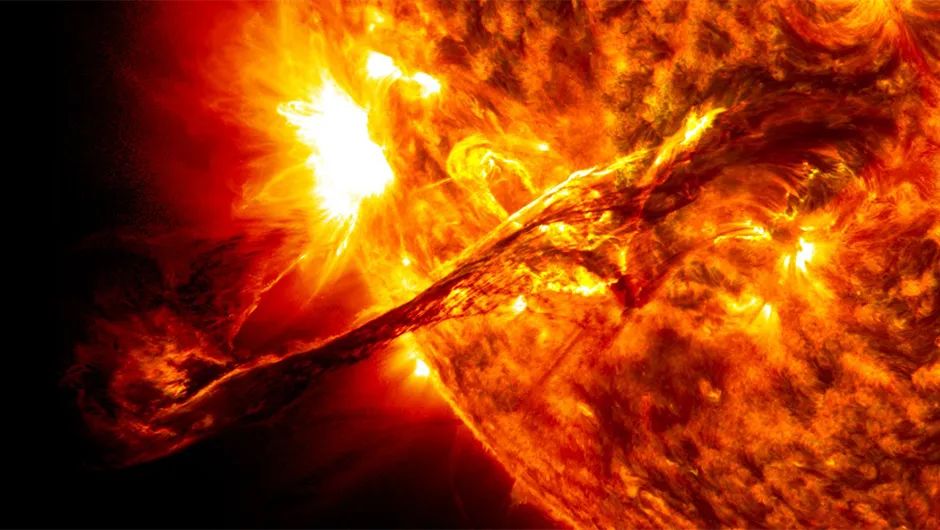An eruption from the Sun has hit Mars, generating a global aurora on the Red Planet and increasing radiation levels to twice that of any previously measured by the Mars Curiosity Rover.
The solar event occurred on 11 September and is known as a coronal mass ejection.
These are eruptions of streams of charged particles from the surface of the Sun, and if strong enough can cause aurora displays on Earth.
This one caused a global aurora to occur on Mars over 25 times brighter than any previously seen by the MAVEN orbiter, which has been investigating the Martian atmosphere since 2014.
The event occurred during a spate of solar activity, even though the Sun is currently going through what is usually a quiet period in its 11-year cycle.

"The current solar cycle has been an odd one, with less activity than usual during the peak, and now we have this large event as we're approaching solar minimum," says Sonal Jain, a member of MAVEN's Imaging Ultraviolet Spectrograph instrument team.
The findings, collected using the MAVEN orbiter and the Radiation Assessment Detector (RAD) on the Mars Curiosity rover, could help plan future manned missions to Mars.
"If you were outdoors on a Mars walk and learned that an event like this was imminent, you would definitely want to take shelter, just as you would if you were on a space walk outside the International Space Station," says RAD Principal Investigator Don Hassler.
"To protect our astronauts on Mars in the future, we need to continue to provide this type of space weather monitoring there."
